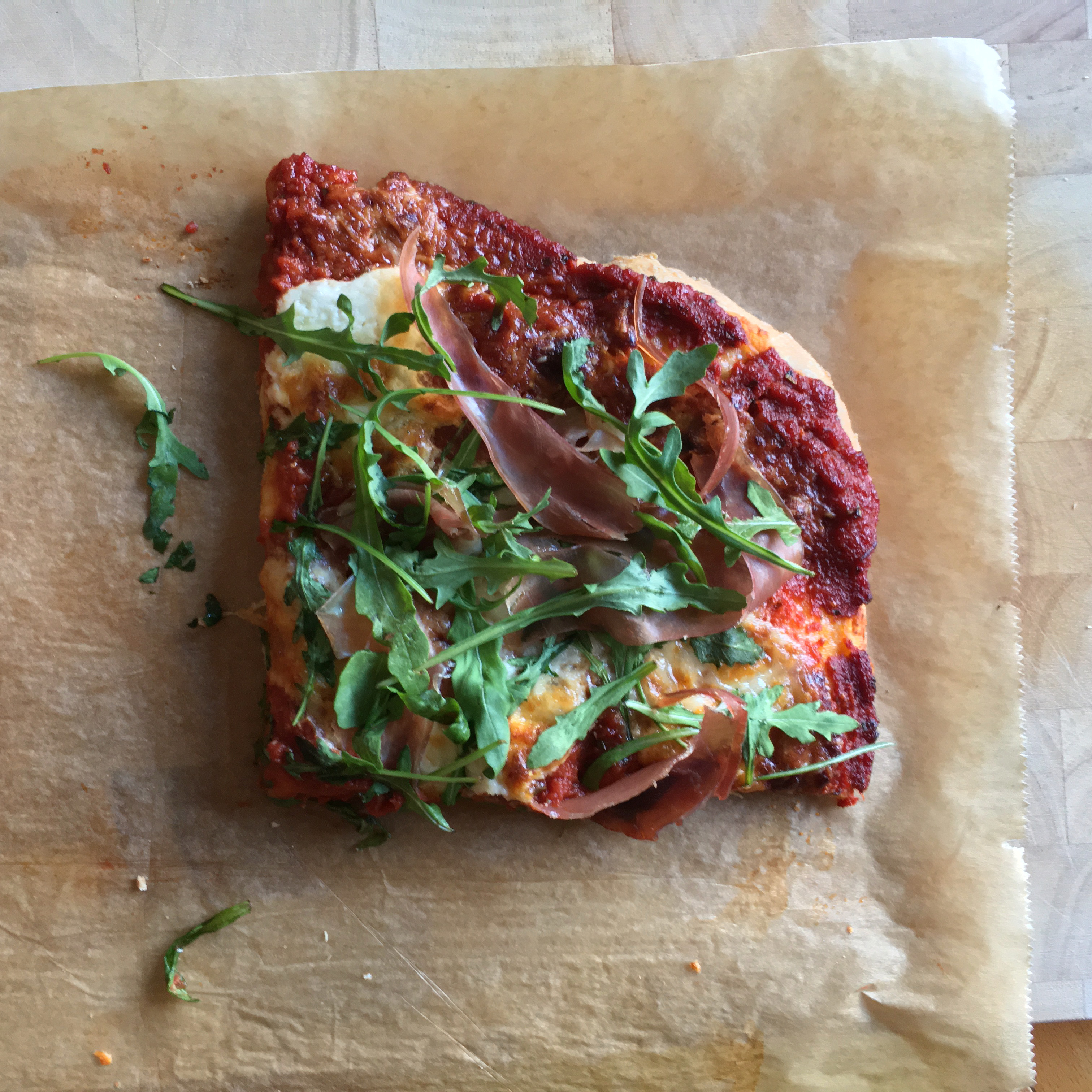
During the last weeks … months I was working on pizza.
I love pizza. Either I eat pizza at my favorite Italian restaurant or I order pizza & pick it up from the restaurant. Or I make my own pizza at home. (I admit that there is another option: buying frozen pizza, but honestly – no frozen pizza can keep up w/ pizza from restaurant … & definitely not with a home-made pizza.
I remember when we had friends around & we made a big baking tray (or 2!) filled w/ pizza. Everybody was invited to make his/her favorite pizza. It was always fun & a feast w/ lots of red wine. I cannot remember that there were any substantial leftovers, however, if some pieces survived it was always delicious to eat them next morning when cleaning up.
So I started preparing pizza for my better half & me – for lunch, for dinner … I started simply meaning no fussing around w/ lots of toppings, w/ extraordinary toppings … Maybe I should mention that I’m an absolute fan of simple classic pizza i. e. pizza fungi, pizza prosciutto, pizza tonno … up to pizza capricciosa or pizza quattro stagione … (Until today I don’t understand what pineapples have to do on a pizza!)
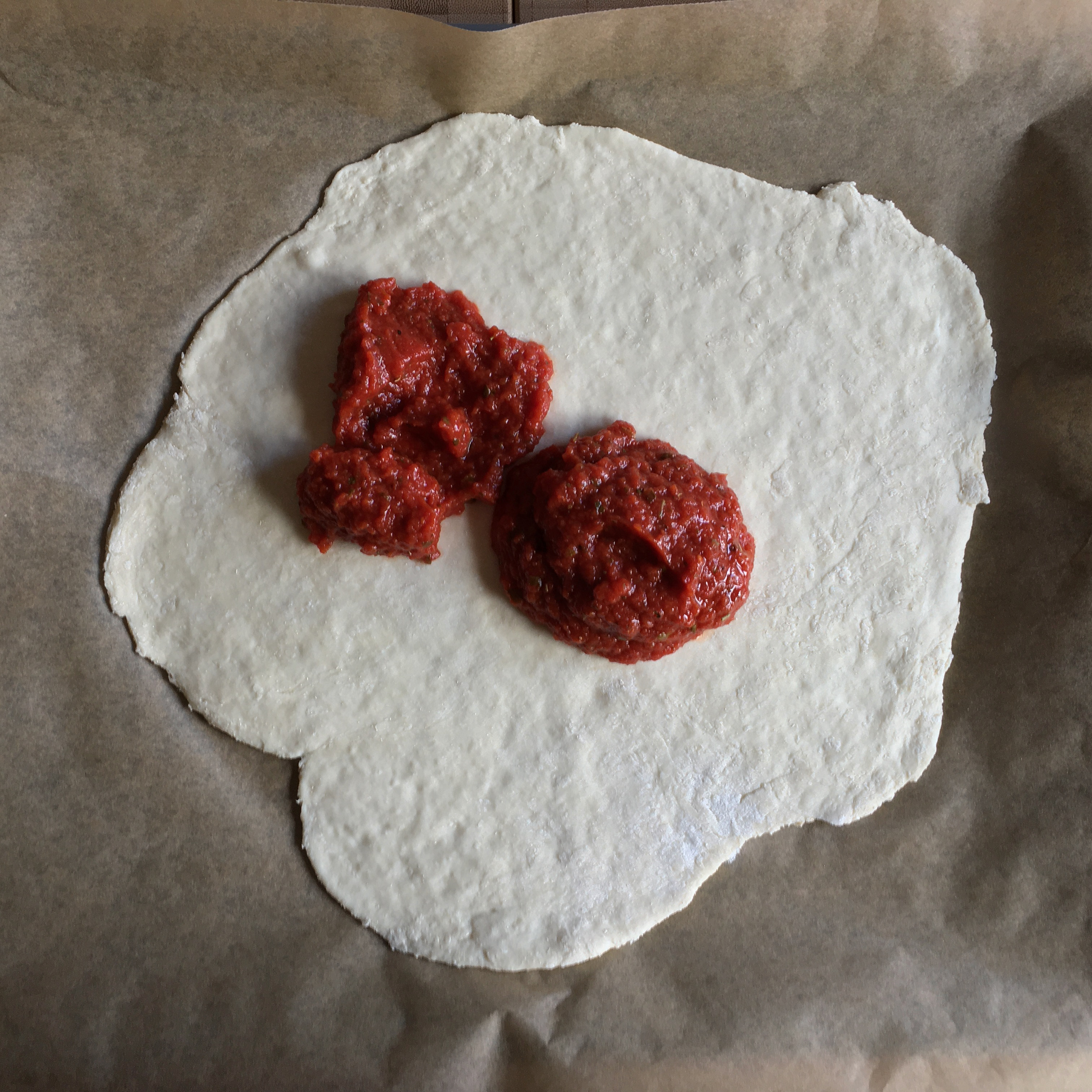
The basis for any pizza is the pizza crust.
You may start from the scratch. Some weeks ago I wrote a post about preparing pizza crust w/ flour, yeast & water. It works fine although you’ll need at least about an hour to give the yeast a chance to do its duty. Only recently I read about preparing pizza crust w/ sourdough, which I didn’t try until now, but it seems that the taste of the pizza crust is delicious.
Another option is to buy a ready-to-go flour mix. In my trusted food store there is a flour mix available consisting of flour, dry yeast & baking powder. While in the from-the-scratch version you ay decide what type of flour you’ll like etc. this flour mix is defined. Fine. You only need some warm water, some mixing & kneading – voilà the pizza crust is ready. This is, in my opinion, an economic approach because you don’t need about an hour for waiting.
Finally you may try a ready-to-bake pizza crust. In this case you only need to roll out the rolled up pizza crust.
I often prefer to work w/ the flour mix because it’s quick & easy. (The flour mix may be stored in your pantry for weeks … Although starting from the scratch takes always a little more effort it’s also possible at all times. You need flour & dry yeast which is also fine for storing in your pantry.
So what did I plan for my pizza?
I thought about a basic pizza w/ lots of tomato sauce & cheese. Only afterwards any more toppings should enter the stage … like prosciutto crudo & fresh arugula.
What do we need?
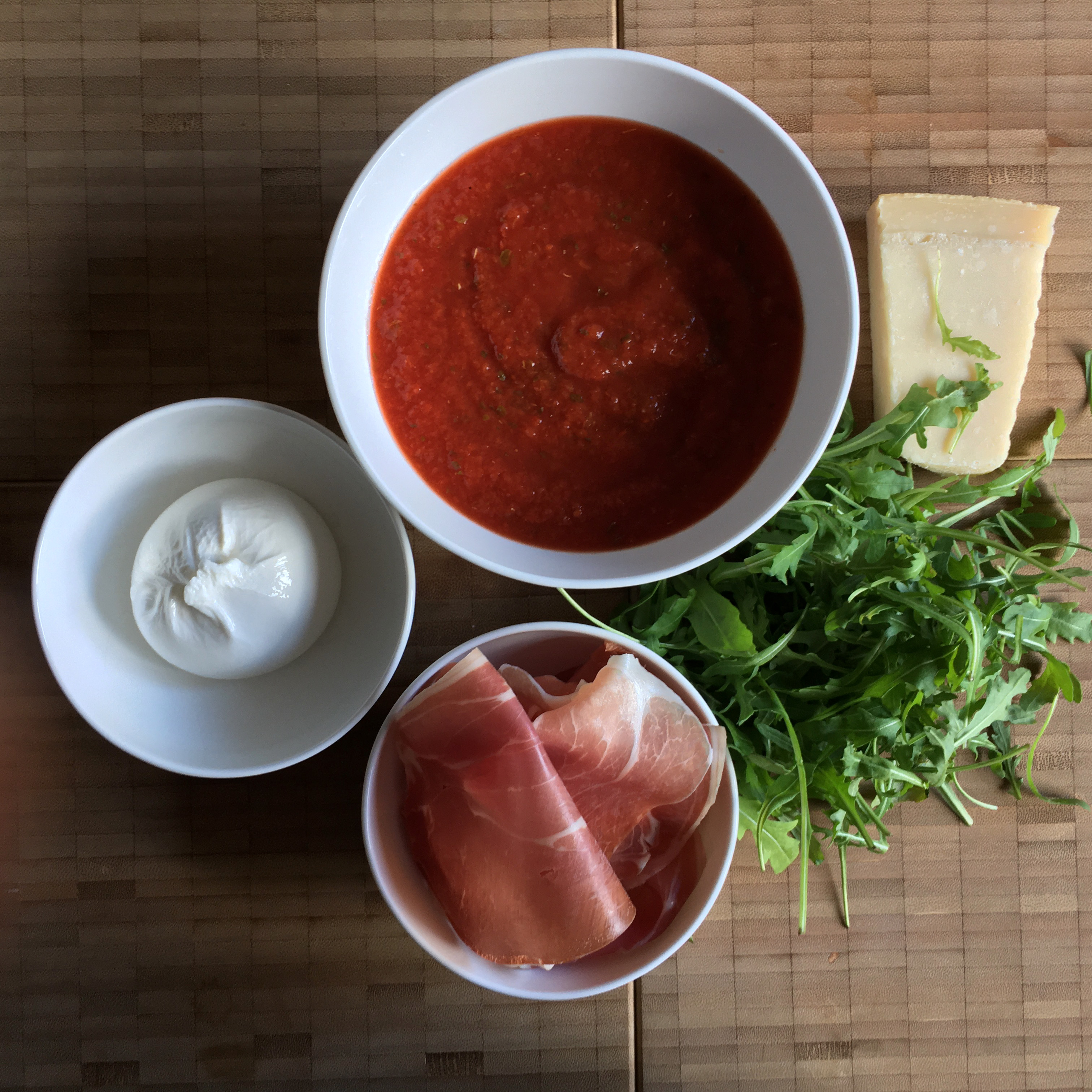
There are only:
- Italian tomato pulp & some refinements in flavor
- parmesan (to be grated)
- burrata
- finely sliced prosciutto di parma
- fresh arugula.
There were some preparations for the pizza.
I whisked together some olive oil, some Italian tomato purée & dried Mediterranean herbs. To make it simple I just added herbs of Provence.
A can of Italian tomato pulp … that’s a lot of water! I think it’s too much water for a pizza crust. So I drain the tomato pulp for some minutes – just take a sieve & pour in the mess. Afterwards it’s just fine. We mix all together & get a fine tomato sauce. Add some salt & pepper … & don’t forget a pinch of sugar or honey or whatever for the sweetness.
Then the parmesan needs to berated & the burrata needs to be pulled to pieces.
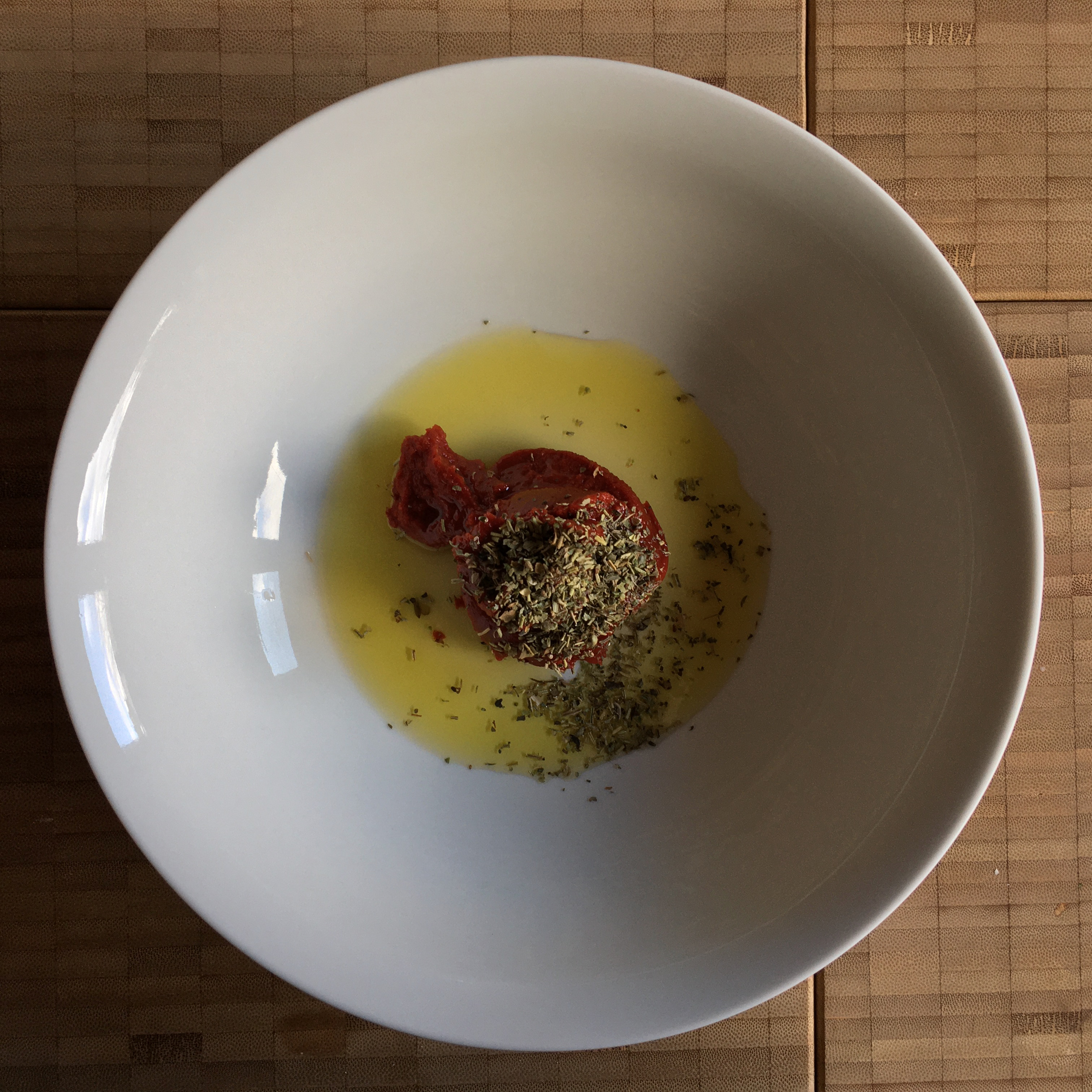
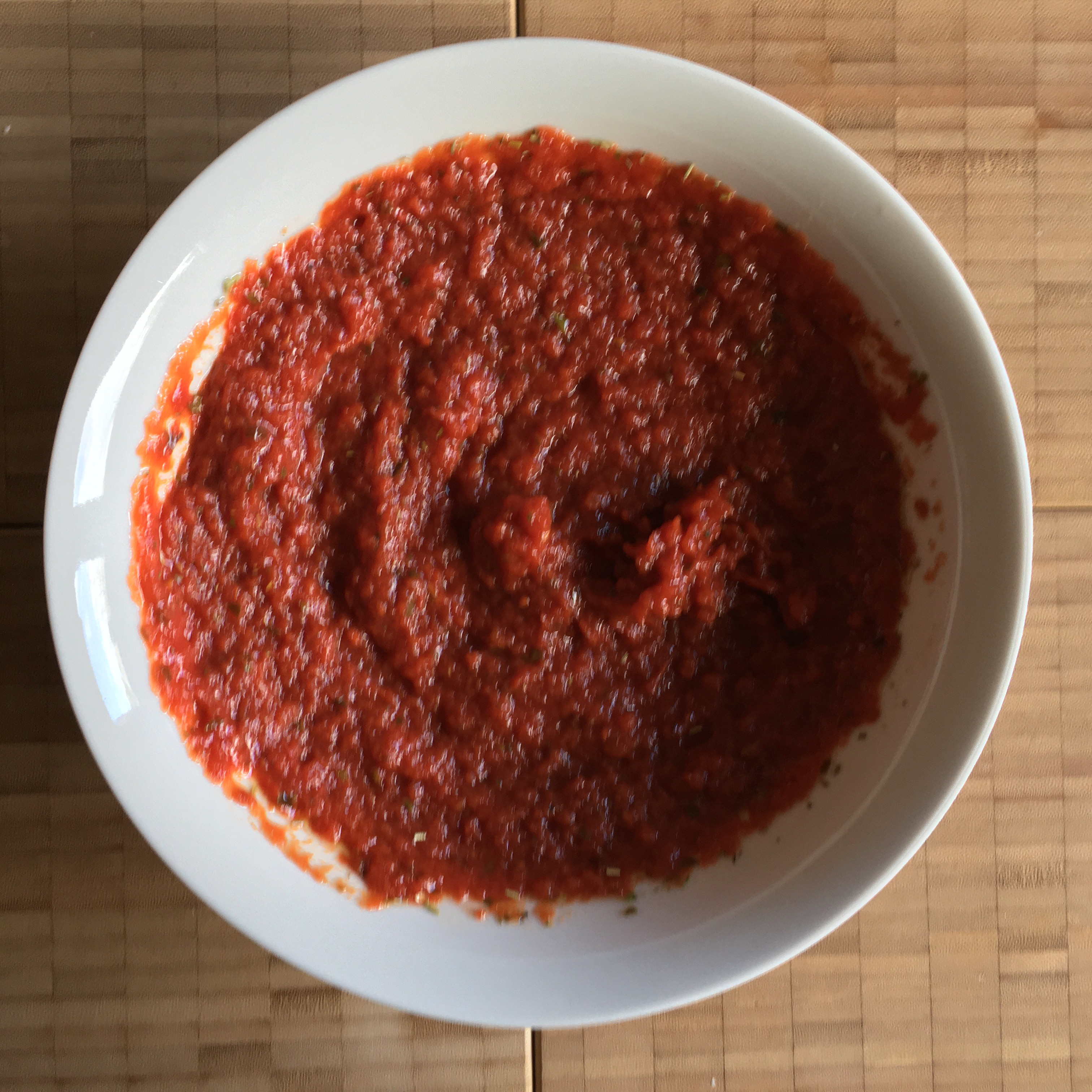
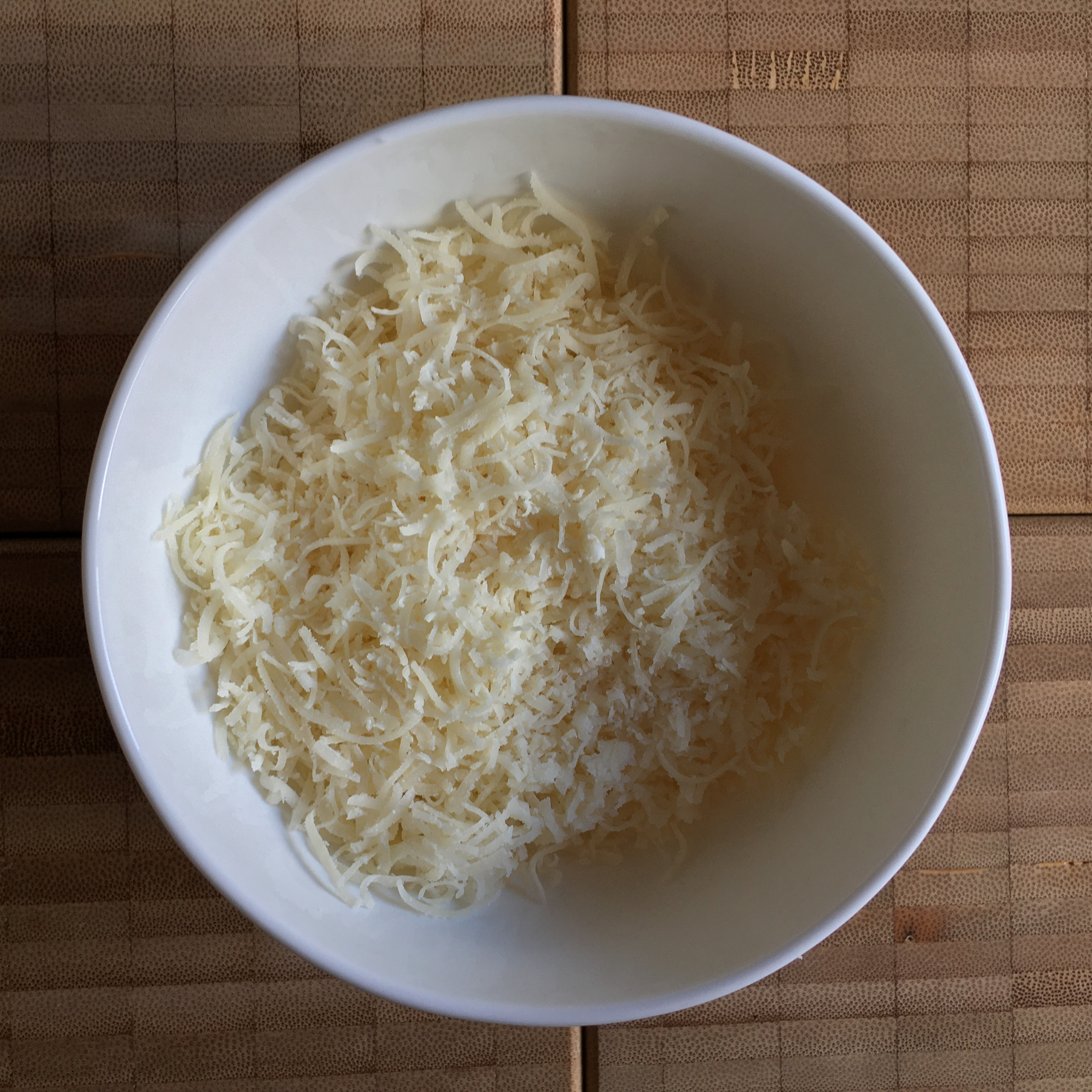
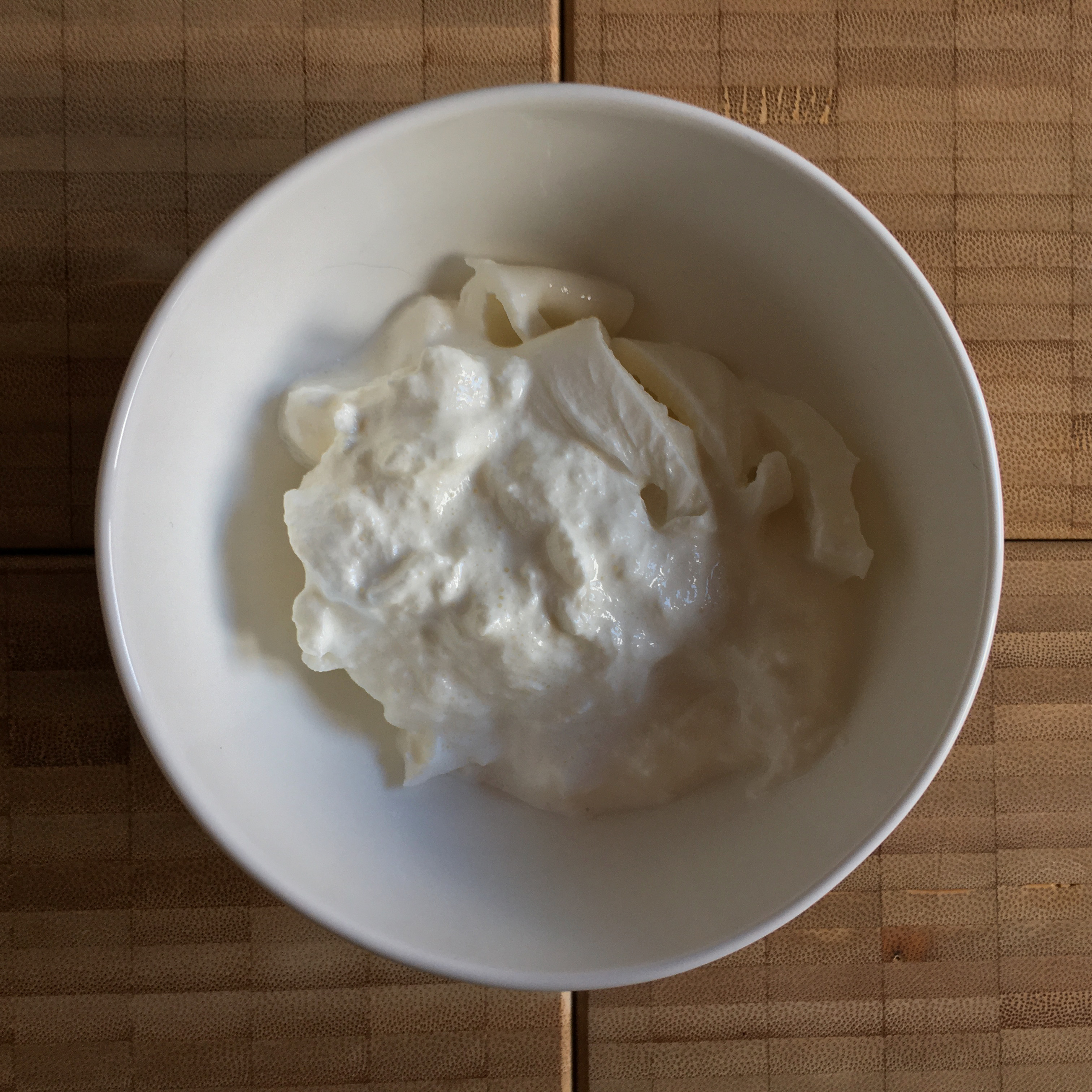
I prepared a pizza crust based on a flour mix & got a soft ball of dough after some kneading.
I grabbed my rolling pin & flattened it on a baking tray lined w/ baking parchment. The baking parchment is important because it saves you cleaning time afterwards.
It doesn’t matter if the pizza crust is perfectly round. Just put all the tomato mess all over the pizza crust. According to my recipe you’ll get quite a lot of tomato mess. If you are no tomato fan – as my better half & I – you ay use only 50% – 75% of the tomato mess. (Just put the rest in a container, put the container in your fridge & use it for your next pasta dish.)
Finally distribute the burrata & the grated parmesan.
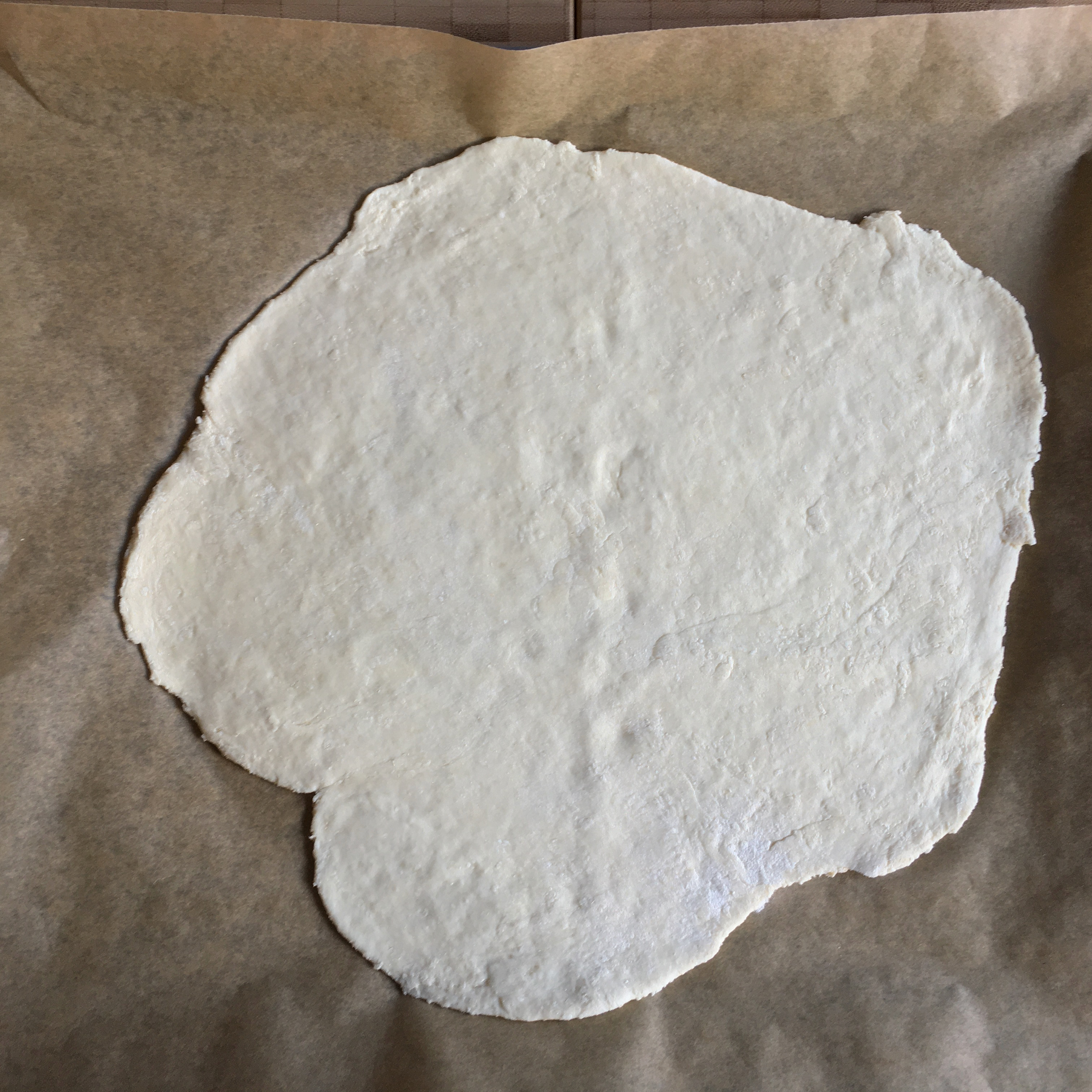
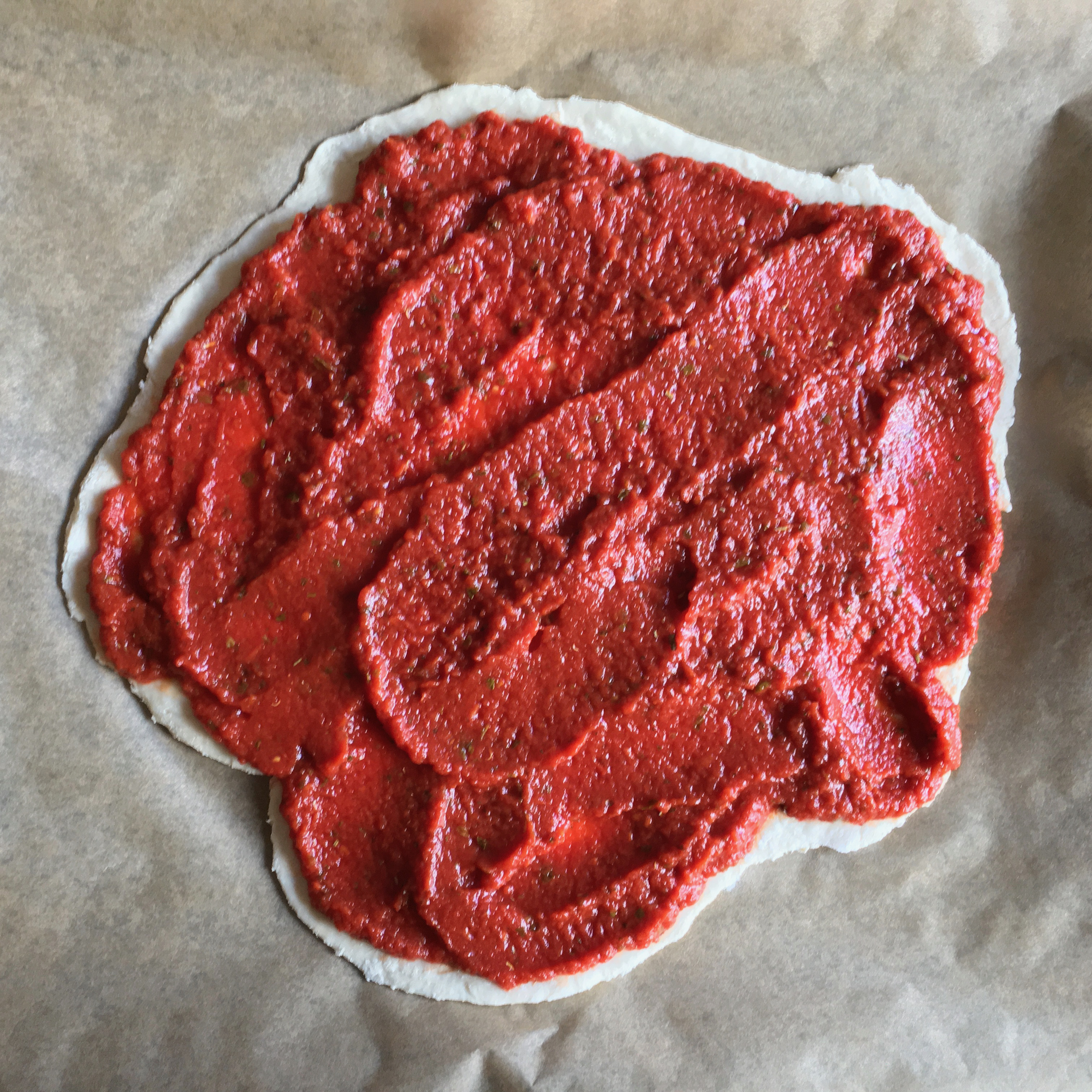
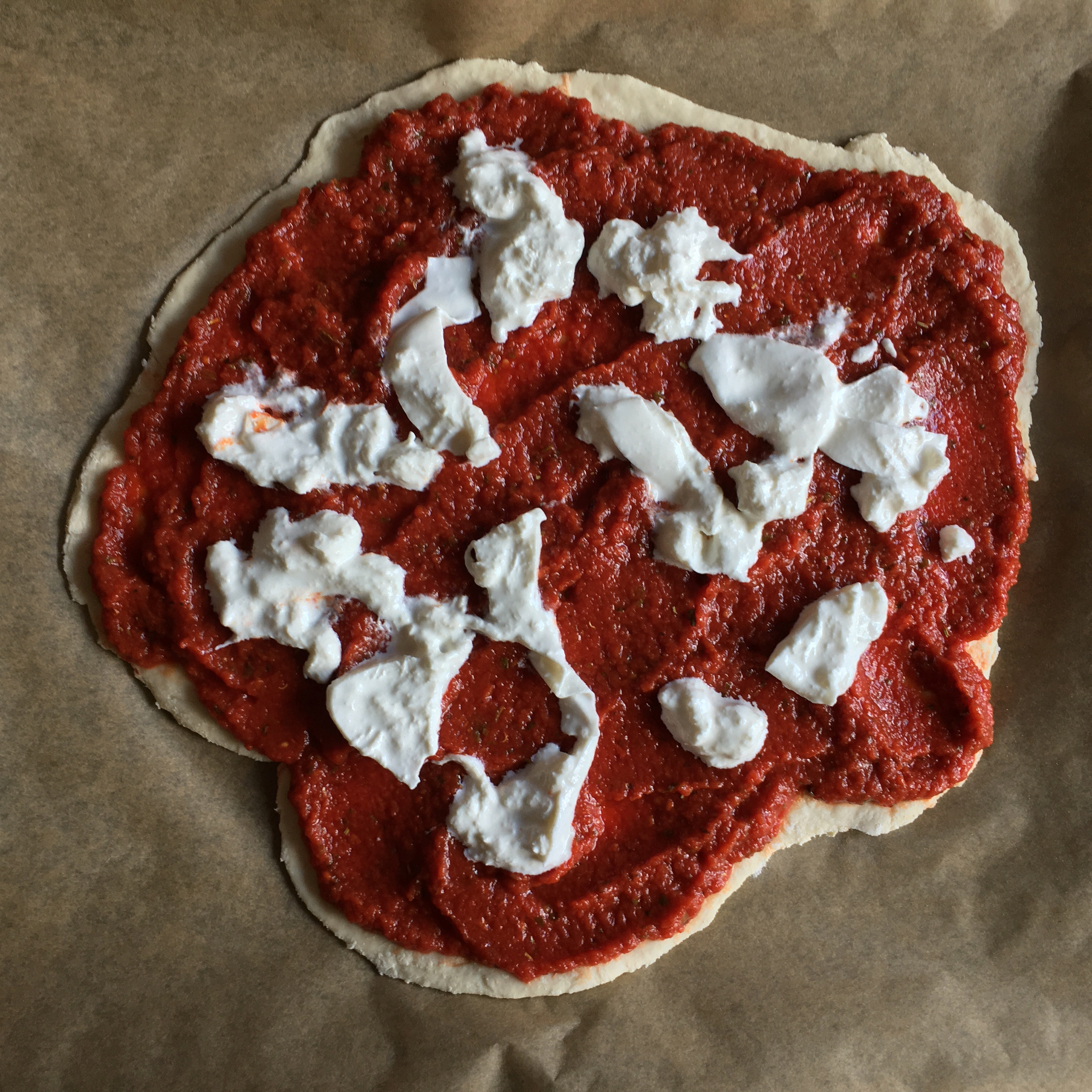
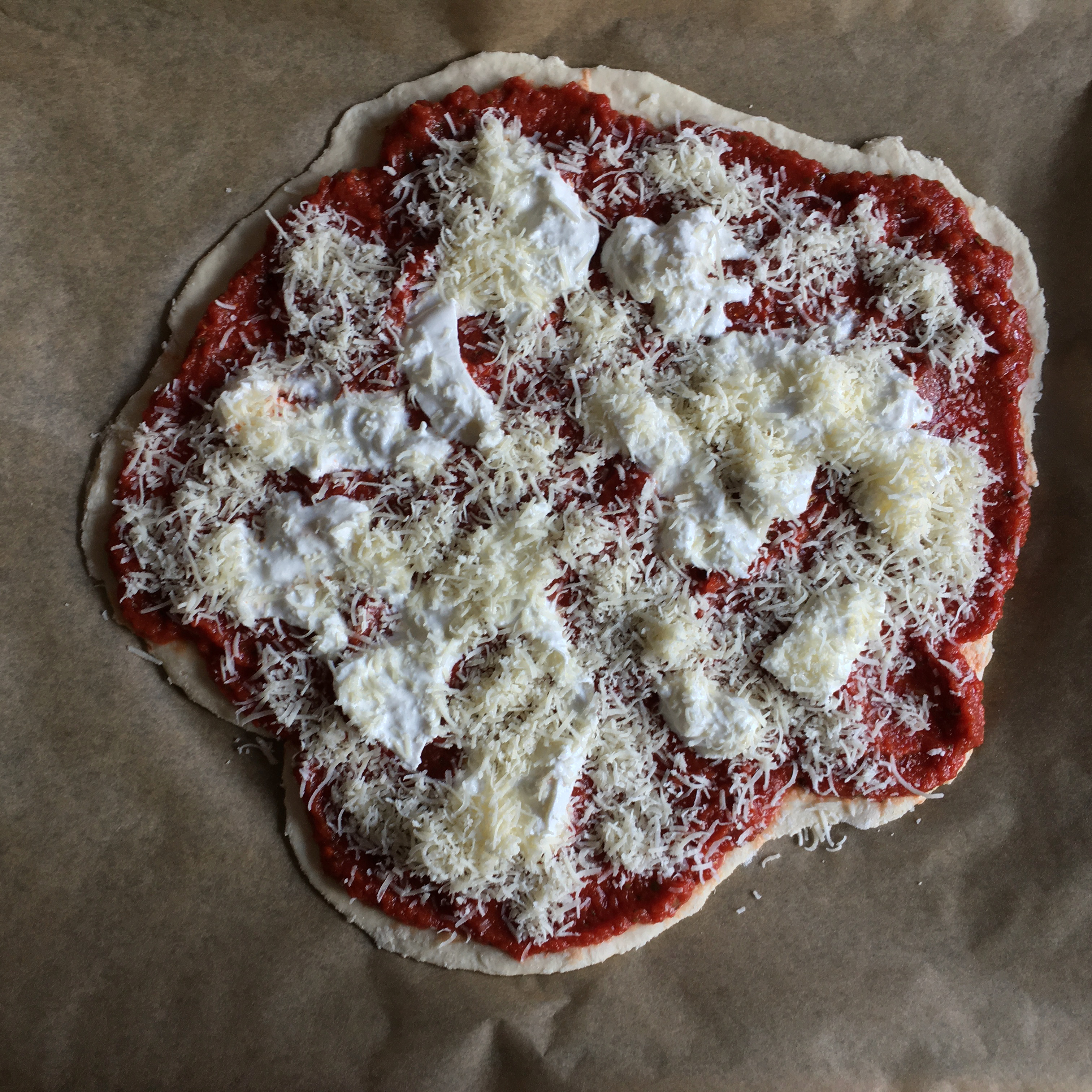
Now the pizza marches into the oven … NO: you don’t need any preheating! Just set the oven to 180° C w/ fan & let the pizza bake for about 25-30 min.
In the meantime prepare the toppings.
It’s easy: just pull the thinly slices prosciutto in pieces & clean the arugula (if necessary.) If the arugula leaves are too big just cut them into halves.
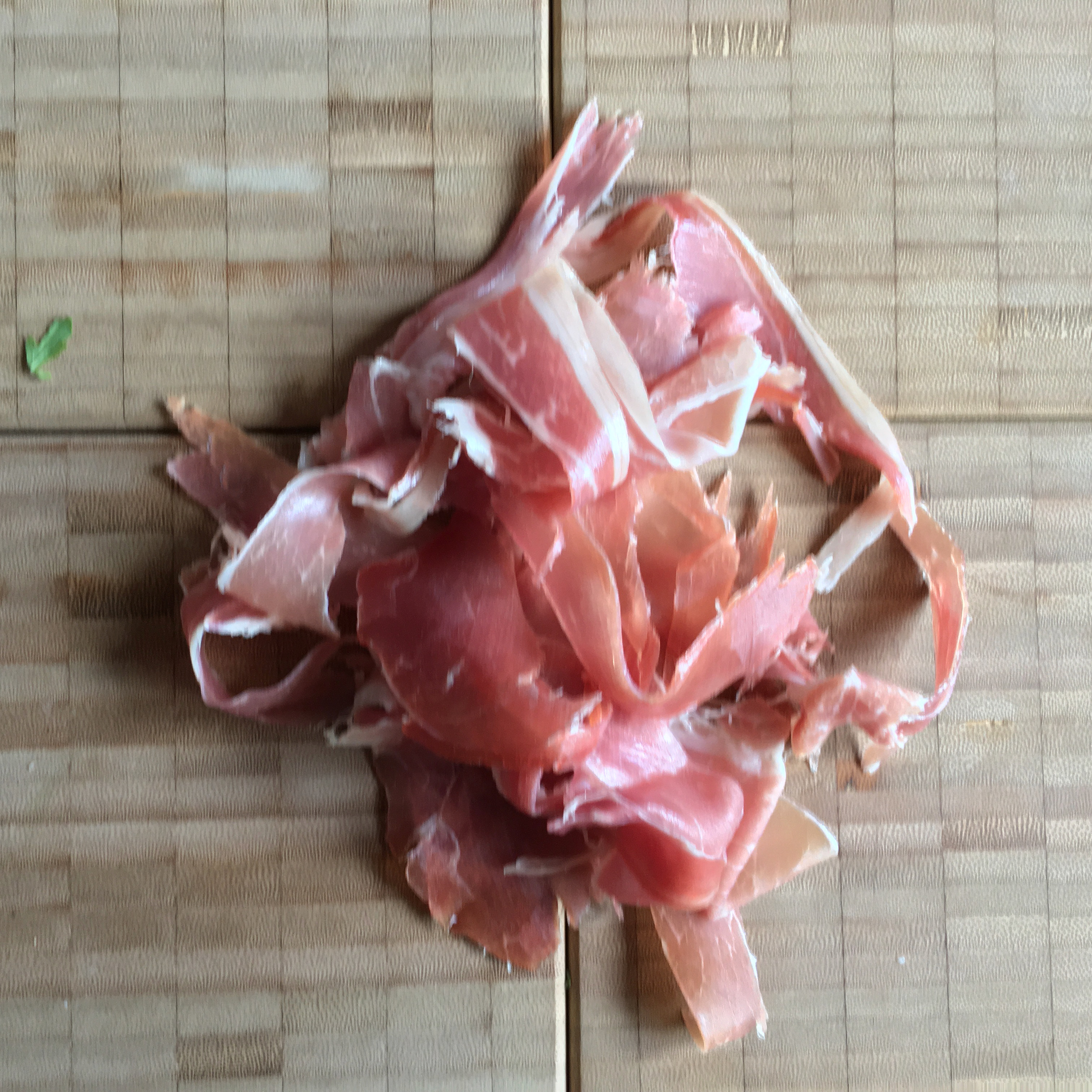
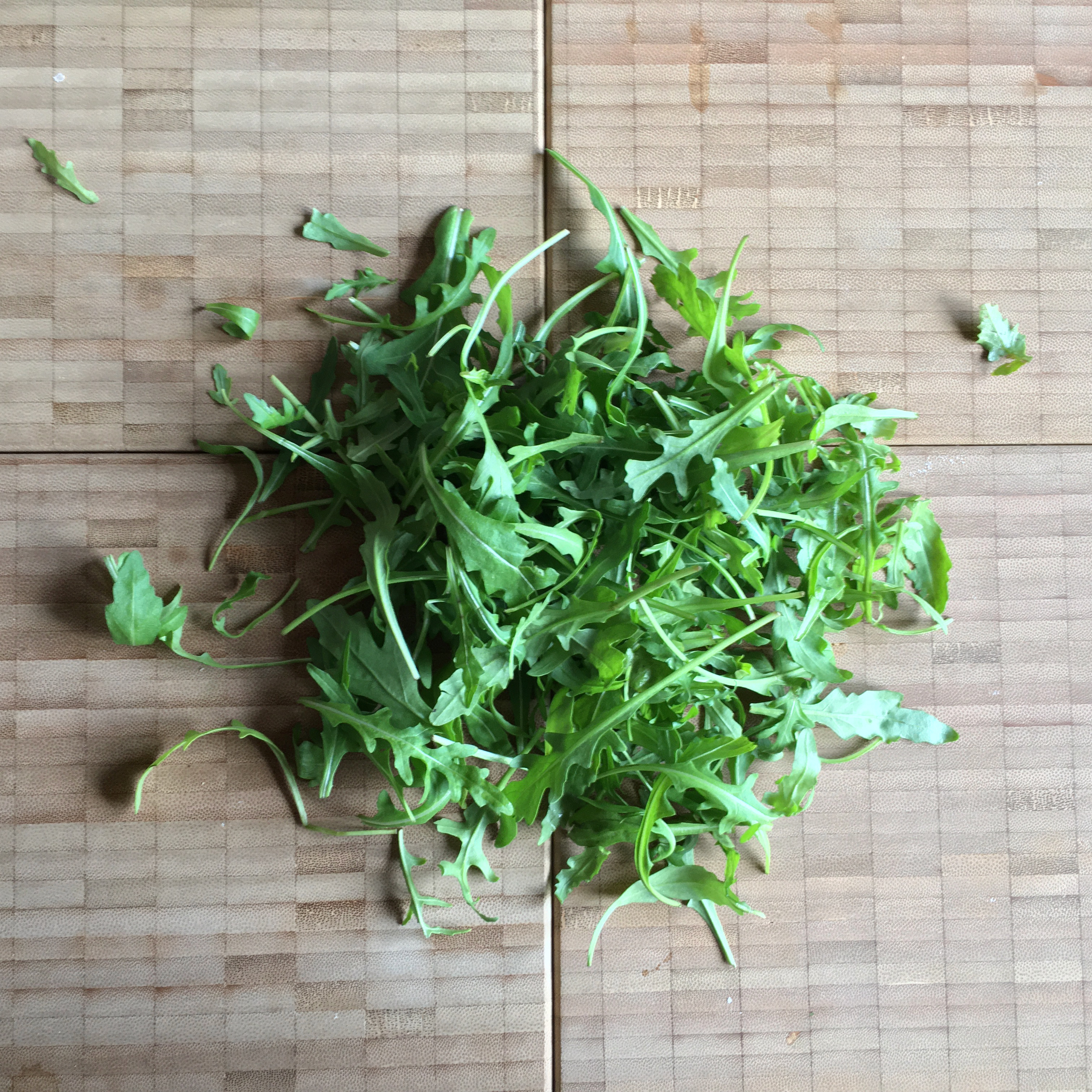
Voilà the pizza after the oven session!
… & it smells like …
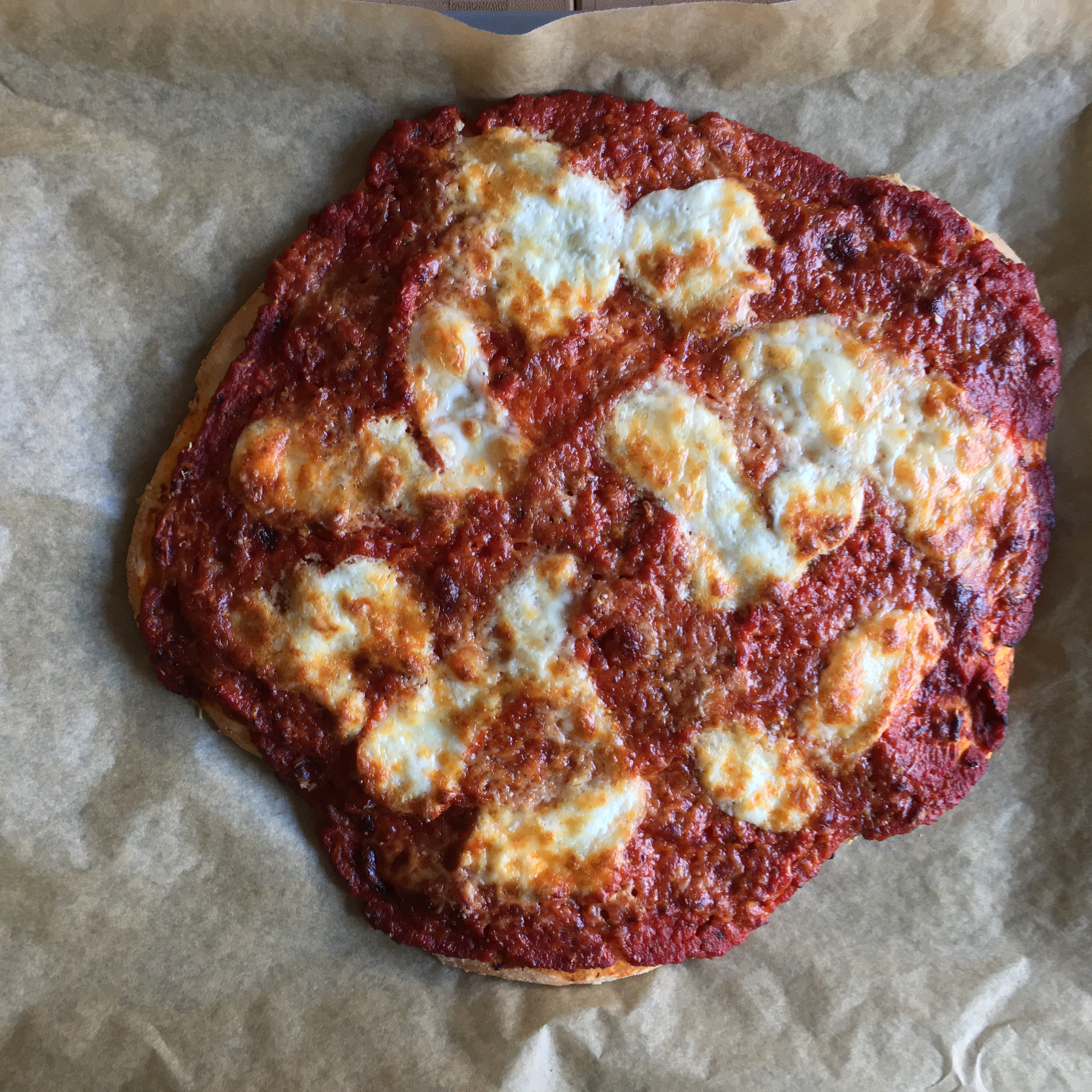
No time to waste: add the prosciutto & the arugula to the hot pizza …
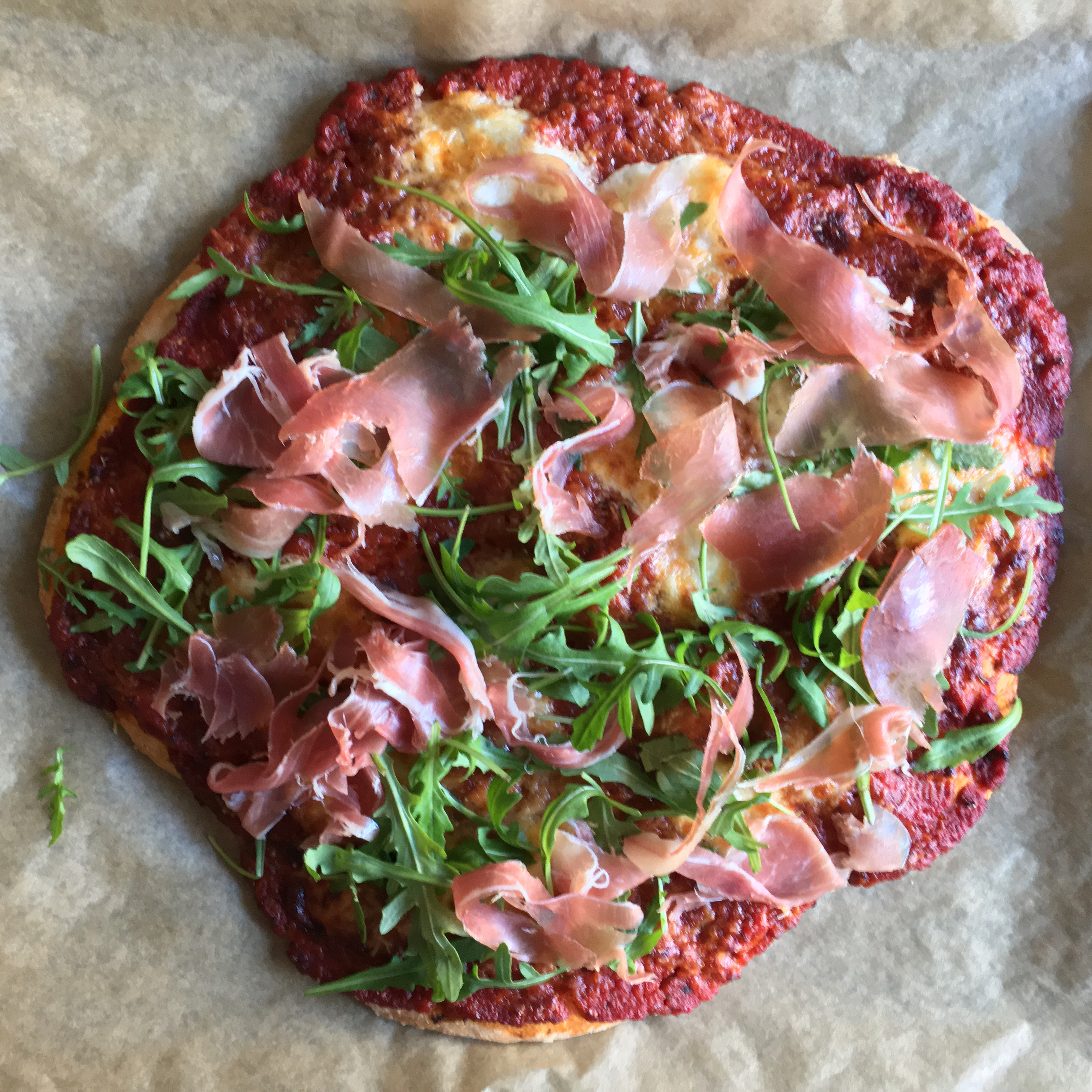
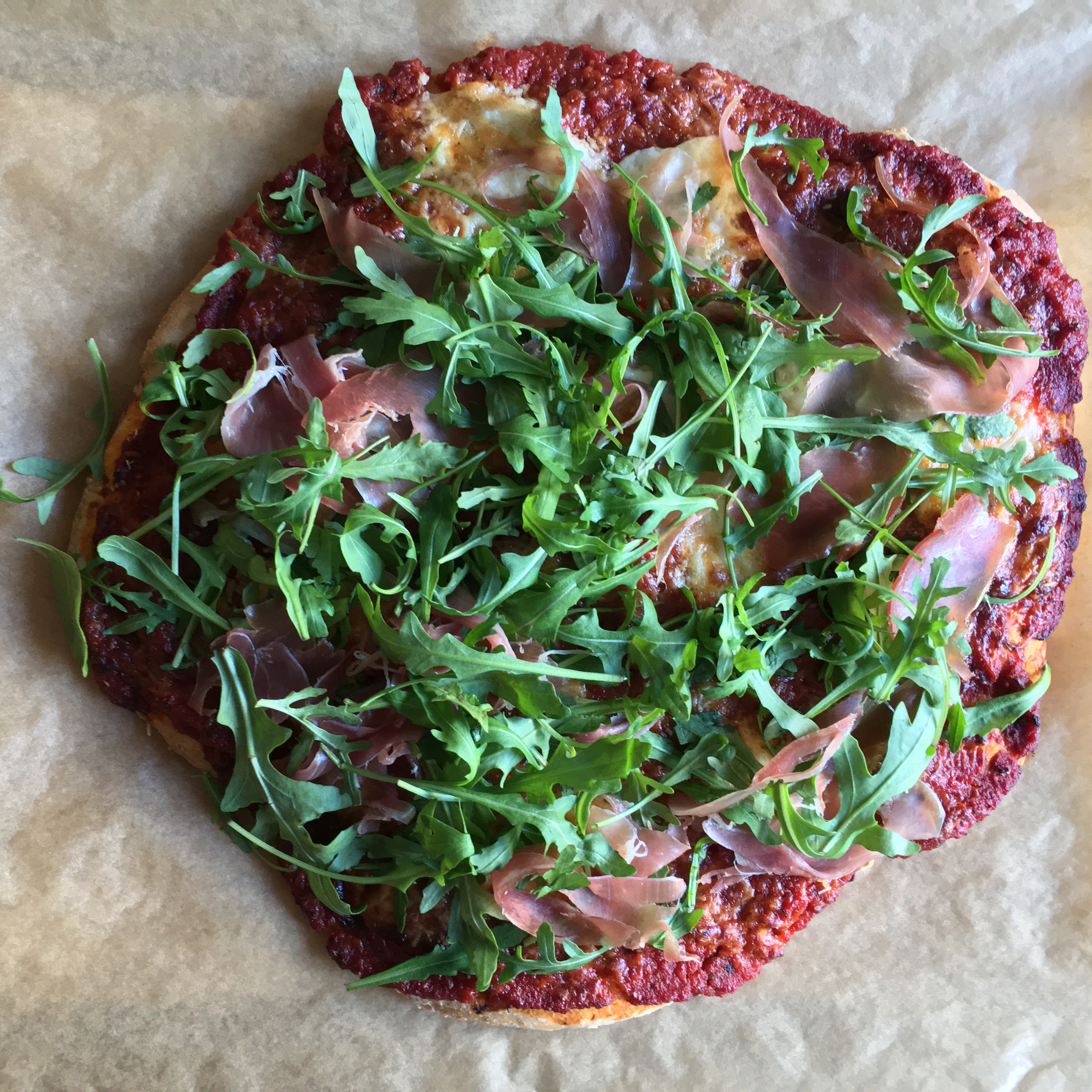
… & serve!

Enjoy!
- 1 pizza crust (round 25 – 30 cm)
- 400 g Italian tomato pulp (1 can)
- 70 g Italian tomato purée (1 can)
- 2 tbsp olive oil
- a pinch of sugar or honey
- 1 tsp dried Mediterranean herbs
- salt & pepper (to taste)
- 100 g burrata (1 piece)
- 40 g grated parmesan
- 50 g prosciutto di Parma (finely sliced)
- a handful fresh arugula (about 25 g)
- Prepare the pizza crust according to the instruction.
- Line a baking tray w/ baking parchment & roll out the pizza crust.
- Drain the tomato pulp.
- Whisk together tomato purée, dried herbs & olive oil. Add the drained tomato pulp & mix. Add some sugar or honey as well as salt & pepper to taste.
- Grate the parmesan.
- Tear apart the burrata.
- Distribute the tomato mess all over the pizza crust.
- Add the burrata as well as the grated parmesan.
- Let it bake in the oven at 180° C w/ fan for about 25-30 min.
- In the meantime: tear apart the prosciutto & clean the arugula. If necessary break up the arugula.
- As soon as the pizza is ready add the arugula & the prosciutto on top.
- Serve immediately.
You may also rely on a ready-to-go flour-yeast-mix which is fine w/ some warm water & some kneading within some minutes.
Or you may buy a ready-to-oven pizza crust at your trusted food store. Tomato pulp: There is a lot of water in the can. For the sake of the pizza crust let it go by help of a sieve. Dried herbs: You may rely on oregano or thyme, you may also use a mix of the classic Mediterranean herbs e. g. like herbs of Provence. Prosciutto: You may use any Italian finely sliced prosciutto – if di Parma, if San Daniele, if South-Tyrolean bacon …
